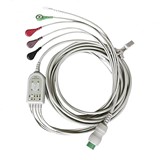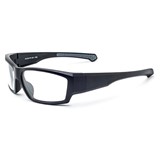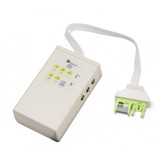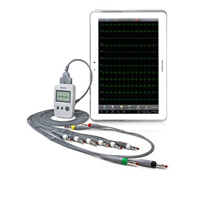Introduction
A 12-lead electrocardiogram (ECG) recorder is a fundamental diagnostic tool in cardiology, capturing the heart’s electrical activity from 12 perspectives. It is used ubiquitously across healthcare settings for rapid assessment of cardiac conditions. In the Australia and Oceania region, hospital administrators, biomedical engineers, cardiologists, and procurement teams prioritize devices that meet stringent clinical needs and regulatory standards. This white paper provides a comprehensive overview of 12-lead ECG recorders – from clinical applications in emergency and telehealth to technical specifications, regulatory compliance, deployment considerations, market players, and future innovations.
Clinical Applications of 12-Lead ECG Recorders
Emergency and Acute Care: In emergencies, a 12-lead ECG is often the first test to evaluate chest pain, arrhythmias, or cardiac arrest. Guidelines in Australia mandate that a 12-lead ECG be recorded and interpreted within 10 minutes for suspected ST-elevation myocardial infarction (STEMI). Paramedics and emergency departments use portable 12-lead ECGs to rapidly identify acute coronary syndromes; if a STEMI is recognized, the ECG is transmitted to a cardiologist or emergency physician for immediate consultation. This practice enables time-critical decisions like activating cardiac catheterization labs or administering thrombolysis. Beyond myocardial infarction, ECGs in the field help diagnose life-threatening arrhythmias and guide resuscitation. The Australasian resuscitation guidelines emphasize 12-lead ECGs as an essential tool for triage and early management of acute coronary syndromes.
Routine Diagnostic Use: In hospitals and clinics, 12-lead ECG recorders are a cornerstone for diagnosing a wide range of cardiac conditions. They detect arrhythmias (e.g. atrial fibrillation, heart blocks), myocardial ischemia or infarction, chamber hypertrophy, and electrolyte disturbances. ECGs are indicated for patients with symptoms like palpitations, dizziness, syncope, chest pain, or shortness of breath, and are used as a screening and monitoring tool for those on cardioactive medications. For example, patients starting antiarrhythmic drugs or QT-prolonging medications undergo serial ECGs to monitor for adverse effects. Pre-operative assessments often include a 12-lead ECG to identify underlying cardiac risks. In sports medicine and occupational health, ECGs help screen athletes and individuals in high-risk jobs for silent cardiac abnormalities. Overall, the 12-lead ECG’s role as a non-invasive, quick diagnostic test makes it indispensable in everyday clinical practice.
Cardiac Monitoring: While continuous cardiac monitoring in hospitals typically uses 3- or 5-lead systems for rhythm observation, 12-lead ECG recorders are used intermittently to obtain a full diagnostic picture. In intensive care units or telemetry wards, a full 12-lead ECG may be performed daily or when a change in patient status occurs, to complement the limited-lead monitors. Additionally, serial 12-lead ECGs are performed in ongoing care of conditions like acute coronary syndromes – guidelines recommend repeating 12-leads at intervals or with symptom changes to catch evolving ischemia. Furthermore, during cardiac rehabilitation or stress testing, 12-lead ECGs are utilized to monitor patients’ cardiac response to exercise.
Telehealth and Remote Care: Telemedicine has increasingly incorporated 12-lead ECG capabilities to extend cardiac care beyond traditional settings. Paramedics in Australia not only perform 12-lead ECGs on scene but also transmit ECG data to receiving hospitals or on-call cardiologists for remote interpretation. This tele-ECG model speeds up treatment decisions, especially critical in rural areas where specialist access is limited. In remote clinics and community programs, portable ECG devices enable local staff to perform an ECG and have it interpreted by specialists via telehealth. A Queensland study demonstrated the deployment of an ultra-portable Bluetooth ECG device (TGA-approved) in rural psychiatry services, allowing non-medical staff to record a multi-lead ECG in patients’ homes and immediately send results to clinicians for review. This approach improved access to cardiac monitoring in underserved areas and proved that even a simplified 6-lead device could approximate a standard 12-lead for telehealth monitoring Post-hospital follow-up is another growing application: in a 2024 tele-cardiology trial, post-MI patients were sent home with a 12-lead ECG “belt” device (the SHL SmartHeart) as part of a telemonitoring package. Patients could self-record ECGs during symptoms, and cardiologists remotely assessed the 12-lead data to triage care, which significantly reduced readmissions and emergency visits. These examples underscore how 12-lead ECG recorders, when paired with connectivity, support telehealth in emergency response, rural healthcare, and chronic disease management.
Technical Specifications and Features of 12-Lead ECG Recorders
Modern 12-lead ECG recorders are engineered to high technical standards to ensure signal fidelity and diagnostic accuracy. Key specifications include:
-
Lead System and Signal Quality: A standard 12-lead ECG uses 10 electrodes (4 limb electrodes and 6 precordial chest electrodes) to derive 12 leads (views) of the heart’s electrical activity. High signal quality is crucial – devices incorporate features like lead contact checking and noise filtering. For example, advanced models perform lead-off detection and display warnings if an electrode has poor contact or if muscle artifact is excessive. A high common-mode rejection ratio (to filter out electrical interference) and shielding of cables help maintain clarity. The lead wire systems are often standardized and color-coded (following IEC or AHA color conventions) to minimize placement errors.
-
Sampling Rate and Bandwidth: Diagnostic ECG recorders sample analog cardiac signals at high rates and with broad frequency response to capture detail. Guidelines recommend an ECG bandwidth from 0.05 Hz up to 150 Hz or more for adults (even higher for pediatrics). Many devices sample at 500 to 1000 samples per second (Hz) per channel, exceeding the Nyquist requirement for a 150 Hz signal. In fact, some cardiographs perform internal oversampling – for instance, one model specifies a raw acquisition sampling rate of 16,000 Hz with an analysis rate of 500 Hz. This oversampling allows precise digital filtering and artifact reduction. The amplitude resolution is typically high (on the order of 2.5 to 5 microvolts per least-significant-bit), enabled by 16-bit or higher analog-to-digital converters. The result is a high-definition ECG tracing capable of displaying subtle features like low-amplitude U-waves or small ST deviations.
-
Display and Output: Most 12-lead ECG machines feature an integrated display screen to preview and review waveforms. Current models use high-resolution color LCD touchscreens, often around 7 to 15 inches. For example, one diagnostic ECG has a 15-inch touchscreen which can show full-size ECG waveforms as they would appear on paper. This facilitates on-screen analysis and eliminates unnecessary prints. Still, thermal paper printouts remain common – devices include an internal printer (typically 210 mm paper for all 12 leads on one page) for hard copies of ECGs. Display resolution and format are designed to show multiple leads (often all 12 leads simultaneously or 3×4 + rhythm strip layouts) with clarity. Visual and audio cues (like beeping for heart rate or flashing lead indicators) may assist the operator.
-
Portability and Power: ECG recorders range from portable, battery-operated units to heavier cart-based systems. Portable models, including tablet or handheld ECG machines, come with rechargeable batteries – important for mobile clinics and ambulances. Battery capacity is a key spec: many provide a few hours of continuous use per charge, while newer portable designs boast longer life. For instance, a ultra-compact ECG recorder (QT Medical’s PCA 500) can run 16 hours continuously on batteryand other tablet ECG units advertise ~4 hours on a charge. Larger cart models also include batteries as backup (allowing use during patient transport or power outages). When evaluating devices, hospitals consider how many ECGs can be recorded on one charge and the recharge time. Portability also involves physical design – newer devices weigh only a few hundred grams and some use pre-positioned electrode strips or wireless leads to speed up deployment.
-
Connectivity and Data Management: Connectivity is pivotal in modern ECG systems. Most 12-lead recorders integrate wired Ethernet and/or Wi-Fi for network connectivity. This enables direct transfer of ECG data to hospital information systems, cardiology PACS, or cloud servers. Many hospitals in Australia/NZ utilize ECG management software (e.g. GE MUSE or Hillrom CardioServer) to receive ECGs from devices and incorporate them into electronic medical records. Standard communication protocols are supported: devices may export DICOM ECG files or use HL7/PDF reports to integrate with EMR systems. Bluetooth is also common for pairing with tablets or PCs in telehealth setups. Additionally, USB ports or SD cards allow local data storage or transfer. Security and privacy are addressed through encryption – especially when transmitting over Wi-Fi or the internet – in line with health data regulations. For example, NSW Health’s tele-ECG protocols require that transmitted ECG data be handled per privacy and electronic security policies.
-
Automated Interpretation Algorithms: Virtually all diagnostic ECG machines now include computerized interpretation software. These algorithms measure ECG intervals (PR, QRS duration, QTc), calculate heart axis and rate, and provide initial diagnostic statements (e.g. “Sinus rhythm, abnormal ST elevation suggestive of anterior MI”). Notably, algorithmic interpretation is considered an aid and not a final diagnosis – clinicians must review and confirm results. The performance of these programs is regulated by standards; IEC 60601-2-25 requires manufacturers to disclose the accuracy of their ECG analysis programs. The algorithms are developed from extensive databases and often carry CE/FDA/TGA clearances as embedded software. For example, GE Healthcare’s Marquette 12SL program (used in GE ECG machines) is FDA-cleared and provides a full analysis with each ECG. Use of such interpretation can improve efficiency – studies show computerized ECG can reduce physician reading time by ~25% without compromising accuracy. However, these algorithms have limitations; they may miss atypical presentations or produce false positives. It is emphasized that automated ECG analysis “is not a substitute for human interpretation”, and all results must be clinically correlated. Recent advances in software (including machine learning) are improving the scope of interpretations, enabling detection of conditions like atrial fibrillation or even predicting ejection fraction from subtle ECG patterns. Nevertheless, continuous physician oversight remains the standard of care.
-
Other Features: 12-lead ECG recorders often include additional useful features such as arrhythmia monitoring modes, vectorcardiography options, or extended leads. Some can perform posterior or right-sided ECGs by repurposing leads (important for certain infarcts). Many devices support stress testing and can connect to treadmills or bicycles, recording 12-leads under exercise and capturing multiple stages of exercise ECG. User interface and workflow features are also notable: e.g. programmable keys for common functions, barcode scanners for patient ID, and on-screen guides for lead placement. These ergonomic and software features improve ease of use and reduce errors in busy clinical environments.
Deployment Considerations for Hospitals, Clinics, and Mobile Units
When implementing 12-lead ECG recorders, healthcare organizations must consider workflow, infrastructure, and context of use:
Hospital Deployment: In hospitals, 12-lead ECG machines are typically deployed in emergency departments, wards, cardiac units, and outpatient clinics. Key considerations include:
-
Integration and Networking: Hospitals benefit from connecting ECG machines to central systems. A networked ECG recorder can immediately send ECGs to a central server or PACS where cardiologists can review and reports can be stored. For example, systems like GE MUSE or Hillrom’s Cardio Server collect ECG data from multiple machines and integrate with the hospital EMR. IT departments must ensure network compatibility (Wi-Fi coverage or LAN ports) and data security (encryption, user authentication) for these devices. DICOM format for ECG is increasingly adopted as a standard for storing/viewing waveforms across different systems, aiding interoperability. Deployment plans should involve the hospital’s IT and clinical engineering teams to configure HL7 interfaces or DICOM gateways so that ECG reports seamlessly attach to patient records.
-
Workflow and Training: Efficient ECG use in hospitals depends on having trained staff and clear processes. Nurses or technicians need training in proper lead placement (misplaced leads can mimic pathology) and in operating the device’s software. Many hospitals develop ECG recording protocols – e.g., every chest pain patient must get a 12-lead within 10 minutes (aligning with clinical guidelines). Ensuring adequate number of machines per unit is also important; high-volume settings like ED might require multiple devices to avoid delays. Training also covers maintenance tasks like cleaning leads between patients (to prevent infection) and hooking the machine to charging when not in use.
-
Maintenance and Quality Control: Biomedical engineering departments schedule regular maintenance for ECG machines. This includes electrical safety testing (per standards and hospital policy), functionality checks (verifying calibration using ECG simulators), and replacing wear parts (battery, cables, electrodes as needed). Lead wires and clips are often high-wear items; many sites keep spares. Some hospitals use single-patient use lead wire kits in critical areas to reduce infection transmission – these disposable leads are used on one patient and discarded. The deployment plan should budget for ongoing costs like paper, electrodes, and yearly preventive maintenance. Moreover, software updates from the manufacturer (for algorithm improvements or cybersecurity patches) should be applied in a timely manner, coordinated by clinical engineering.
-
Department-specific Use: Different hospital areas might have special needs. For instance, in operating theatres or critical care, space is limited – a compact ECG device or modular patient monitor with 12-lead capability might be preferred. In contrast, dedicated cardiology departments might use high-end ECG carts with interpretive software and connectivity to send data to cardiologists’ workstations. When deploying, the user feedback from each department should guide whether they need cart-mounted units (with large screens and keyboards for ease of data entry) or smaller portable units.
Clinics and Primary Care: Clinics, GP offices, and outpatient centers also use 12-lead ECG recorders but typically at a smaller scale. Key factors:
-
Portability and Ease of Use: Smaller clinics may opt for portable ECG devices or even PC-based systems (USB ECG modules that attach to a laptop). These are cost-effective and save space. Battery operation is valuable if the clinic has multiple rooms or does outreach camps. Devices that can store many ECG records internally or on a tablet are useful where network connectivity is limited.
-
Interpretation Support: In primary care, practitioners might not be cardiology experts, so having an interpretive ECG machine is particularly helpful. The machine’s algorithm can flag abnormal findings (“possible anterior infarct” or “atrial fibrillation detected”), assisting the GP in deciding next steps. This augments care, though remote consultation with a cardiologist is still often recommended for unclear cases. Some clinics use telehealth services – e.g., performing an ECG and sending the tracing to a cardiology service or over a secure web portal for official reading.
-
Connectivity vs. Standalone: A clinic might or might not integrate the ECG into an electronic record system. Many standalone clinic ECGs simply print results or allow PDF export. Deployment can be as simple as plugging the machine in and training the staff, but considerations include data storage (keeping copies of ECGs for patient records) and privacy (handling any digital transfer of ECGs in compliance with patient confidentiality). With increasing adoption of digital health, even clinics are moving toward storing ECGs electronically rather than in paper files.
-
Consumables and Support: Clinics should maintain stock of ECG consumables (electrodes, paper) and have a plan for device support. Often they rely on the supplier for annual checks or repairs. In Australia/Oceania, many suppliers offer maintenance contracts or on-demand technical support for clinic customers. Deployment plans in clinics should ensure staff know how to contact support and perform basic troubleshooting (like checking electrode gel, battery level, etc.).
Mobile Health Units and Ambulances: Deploying 12-lead ECG capability in mobile settings (ambulances, medical cars, field clinics, mining sites, etc.) requires attention to ruggedness and autonomy:
-
Rugged and Reliable Design: Devices for mobile use must tolerate motion, vibration, and varying environmental conditions (heat, humidity). Ambulance crews often use defibrillator-monitors (such as LIFEPAK or Zoll units) which include 12-lead ECG recording and monitoring in one device. Those are built to military-grade specs. For purely diagnostic recorders taken to the field, the casing should be durable and leads securely attached. Some portable ECGs come with protective carry cases or bags for transport.
-
Power and Battery: In mobile units, battery operation is essential. The ECG device should have a battery that lasts through a typical shift or event (or the vehicle should have power inverters for recharging). For example, a portable ECG with 12+ hours battery life is ideal for day-long outreach clinics. Always charging the device when the vehicle is running or overnight at base is a practice to ensure readiness.
-
Connectivity for Telemedicine: A huge advantage in the field is the ability to transmit ECGs to hospital cardiologists (tele-cardiology). Ambulance protocols in parts of Australia include transmitting the pre-hospital ECG to the receiving hospital for faster treatment on arrival. Therefore, mobile ECG systems deployment should consider cellular data or radio connectivity. Many ambulance ECG/monitor devices have built-in modems or connect to tablet computers that send the ECG over mobile networks. In remote areas where real-time transmission is not possible, devices might store the ECG for later upload, but increasingly satellite or other communication methods are used for critical cases.
-
User Training and Protocol: Non-hospital environments often have non-specialist users (paramedics, nurses in remote clinics, even trained lay responders). Training is crucial so that these users can quickly perform a quality ECG (correct lead placement even under pressure) and know how to operate the device and send data. Clear protocols should be in place – e.g., an ambulance officer diagnosing STEMI from the ECG is empowered to activate certain treatment pathways (with physician oversight via telehealth as needed). For community health workers using portable ECGs in villages, the deployment might include a smartphone or tablet that guides them step-by-step (some modern devices have apps with real-time placement guidance and ECG quality indicators).
-
Maintenance in the Field: Field-deployed devices require a plan for maintenance despite being away from the hospital base. This might involve scheduled checks when the unit returns to a central facility, or stocking of spare cables and batteries in the ambulance. Water-resistant or splash-proof devices are preferred in unpredictable field conditions.
Across all settings, data privacy and cybersecurity is a growing deployment consideration. Any time ECGs are transmitted or stored digitally, healthcare providers must ensure compliance with privacy laws (Australian Privacy Principles, NZ Privacy Act, etc.) and secure the data (encryption, password protection on devices). For example, NSW Health explicitly requires ECG transmission systems to align with its electronic information security policies. Thus, deployment plans should involve the IT security team, especially for telehealth use.
Finally, user acceptance is a factor – introducing new ECG technology (like a wireless electrode patch or a novel interface) requires engaging clinicians so they trust and effectively use the device. Pilot programs and feedback loops are wise when deploying innovative ECG recorders.
Conclusion
12-lead ECG recorders remain an essential investment for healthcare facilities, from major metropolitan hospitals in Australia to remote clinics on Pacific islands. They play a critical clinical role in emergency cardiac care, everyday diagnostics, and emerging telehealth models. This white paper has detailed how modern ECG devices combine robust technical specifications (high-fidelity signal capture, advanced algorithms, connectivity) with adherence to regulatory standards (TGA/Medsafe requirements and IEC safety benchmarks) to deliver reliable performance. Proper deployment – considering integration, user training, and context-specific needs – is crucial to harnessing the full benefit of these machines.
The market in Oceania is well-supported by leading manufacturers and distributors, ensuring that healthcare providers have access to state-of-the-art options and after-sales support. Looking ahead, innovation in ECG technology promises to further enhance cardiac care: we anticipate more portable and patient-friendly devices, AI-assisted diagnostics, and seamless telemedicine integration becoming commonplace. Hospital administrators and procurement teams should align purchases with not only current needs but also these future trends, opting for devices that can scale and adapt (e.g. software-upgradable platforms).
In essence, the 12-lead ECG is a mature yet evolving tool – its core capability of capturing the heart’s electrical story is as vital as ever, while new chapters are being written through technological advances. By staying informed on clinical applications, technical and regulatory requirements, and market offerings, decision-makers in Australia and Oceania can ensure they deploy ECG solutions that save lives, improve efficiency, and pave the way for innovative cardiac care delivery in the years to come.
Sources: The information in this paper is drawn from clinical guidelines, technical standards, and industry data specific to Australia/Oceania. Key references include Australian cardiac care protocolsaci.health.nsw.gov.au, TGA/Medsafe regulatory documentstga.gov.aumedsafe.govt.nz, international ECG standardswebstore.iec.ch, and product/market details from manufacturers and local suppliersmedicalsearch.com.auintermedmedical.com.au, among















Devices-205x205.jpg)














